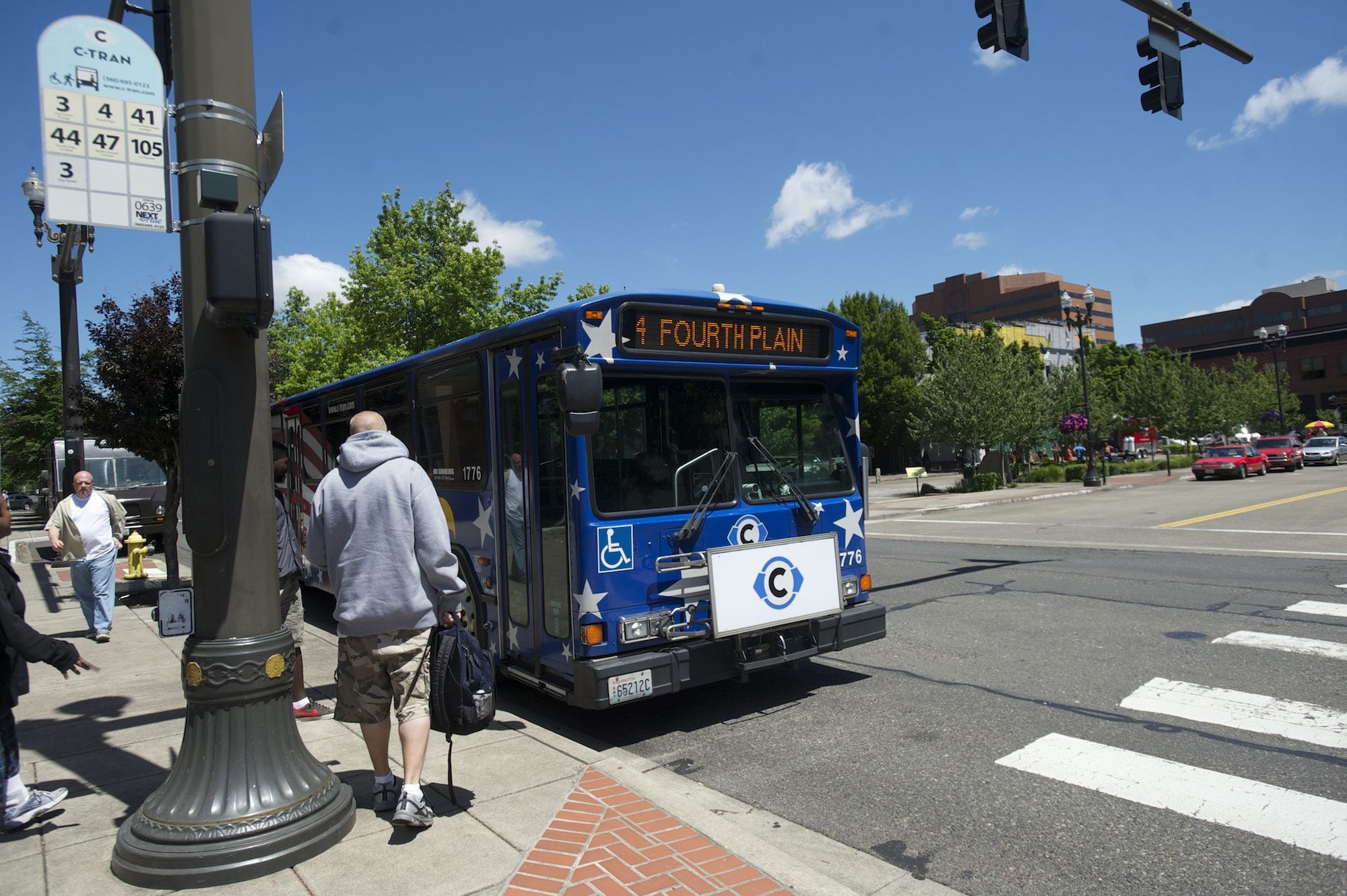It takes time to stop a bus, and when a driver hits the brakes at the last second it may already be too late.
As part of an experiment to see if technology can reduce the number of collisions between people and buses, C-Tran has agreed to have some of its fleet equipped with alarms that warn if a potential collision is imminent.
“Hopefully, one of the advantages of these systems is it’ll provide a little extra warning in left and right turns,” said Terry Lohnes, safety and training manager at C-Tran.
Bus drivers have a lot to keep track of, between fighting traffic, staying on time and monitoring passengers. For safety, they’re supposed to check their side mirrors every few seconds, but those big mirrors can hide pedestrians during a turn.
The danger is compounded when people crossing the street are looking at a phone instead of the intersection, or when a cyclist zips past without checking.
Created by the companies Mobileye and Rosco Vision Systems, the technology is similar to the collision warning systems in new cars. Cameras monitor areas in front of and alongside the bus. When the bus is within three seconds of hitting someone, a yellow human figure on the right, center, or left side of the dashboard lights up. When a person is within one second, a red figure flashes and an alarm sounds.
“The machine is pretty smart. It can pick out a human … or a human form on a bicycle,” Lohnes said.
The system also warns bus drivers if they’re following a vehicle too closely or if they’ve driving at least 5 mph above the speed limit.
Transit agencies from the cities of Tacoma, Olympia, the Tri-Cities, Everett, and Spokane, along with Kitsap and King counties, also are participating in the study. Data collection starts this month, but seven of C-Tran’s buses have been equipped with the cameras and warning systems since November.
Monitor-equipped buses are on routes 32, 71, 65 and 25; one will float on multiple routes.
Lohnes said C-Tran isn’t going to use the information for disciplinary purposes.
Over the course of five months, the study will log how many times the system was activated and the date, location and video of each occurrence.
Researchers at the University of Washington will analyze the data and see how effective the systems are.
For C-Tran, the study is a sort of “try before you buy.” It was paid for by the Washington State Transit Insurance Pool and federal grants.
Lohnes said the agency is open to purchasing camera systems for its buses, but first officials want to see how the study pans out and if the funding is available.
C-Tran spokesperson Christine Selk said C-Tran had one collision in 2015. No claim has been filed against the agency in that incident, which occurred in July.
“We put the utmost value on safety, so it’s exciting to be a part of this project,” she said.




